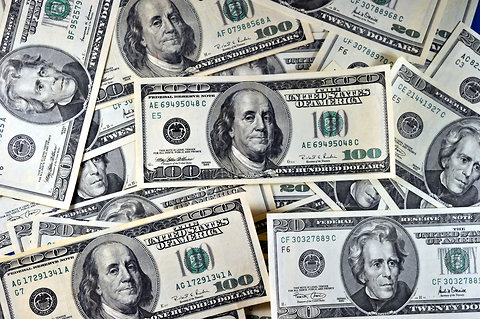 Karen Bleier/Agence France-Presse — Getty Images
Karen Bleier/Agence France-Presse — Getty Images
The announcement Wednesday that the Federal Reserve, working with other central banks, will offer dollars to foreign banks at cut-rate prices surely raises the question: Why do foreign banks need dollars?
The simple answer is that foreign banks really like the things that dollars can buy. They liked investing in American government debt, and lending money to American corporations, and most of all they liked buying American mortgages and all manner of crazy investments derived from those mortgages.
Bank holdings of assets denominated in foreign currencies ballooned from $11 trillion in 2000 to $31 trillion by mid-2007, according to a 2009 report by the Bank for International Settlements. European banks posted the fastest growth, and that growth was concentrated in dollar-denominated assets. By the eve of the crisis, the dollar exposure of European banks exceeded $8 trillion.
Many of these investments were funded on a short-term basis. The paper from the Bank for International Settlements estimates that European banks had a constant need for $1.1 trillion to $1.3 trillion in short-term funding. The banks raised that money mostly by borrowing domestically and then acquiring dollars through foreign-currency swaps. Banks also sold short-term debt to American money-market funds.
The financial crisis happened in large part because investors stopped providing banks with short-term funds. They lost confidence in their ability to discern which banks could repay such loans.
In response, the Fed started offering dollar loans to foreign banks in December 2007. At the peak of the lending program, in December 2008, foreign banks held more than $580 billion provided by the Fed. The European Central Bank accounted for half the peak total, $291 billion. Loans to the Bank of Japan peaked at $123 billion, but most of the rest of the dollars also went to Europe, to the Bank of England, the Swiss National Bank and the central banks of Sweden, Norway and Denmark.
An analysis by the Federal Reserve Bank of New York, published earlier this year, found that the dollar loans played an important role in stabilizing foreign banks during the financial crisis. (Those banks also borrowed directly from the Fed, in large quantities, through American subsidiaries.)
Forward to the present moment: European banks have tried to reduce their dollar exposure since 2008 by shedding dollar-denominated investments and avoiding new ones. The Bank for International Settlements said in a 2010 paper that the short-term dollar needs of European banks might have declined to as little as $800 billion by the end of 2009. It is likely that banks have made some additional progress over the last two years. But the funding need remains considerable, and once again private investors like money-market mutual funds are pulling back from lending.
And once again the Fed is stepping in, although so far it has lent only $2.4 billion.
Article source: http://feeds.nytimes.com/click.phdo?i=447ced4469ec7997e24a3d7961cabeeb
Speak Your Mind
You must be logged in to post a comment.